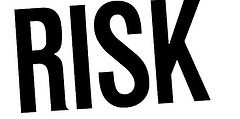|
|
|
Saturday, August 29th, 2009
If there is one thing I have learned in more than two decades of working with entrepreneurs is that there is little that is “typical” about them, contrary to the media and even the scientific research.
 How many times have you heard that entrepreneurs are risk takers? That may look true on the outside, but talk to them and you’ll find that most consider the risks minimal—based their own personal definition. How many times have you heard that entrepreneurs are risk takers? That may look true on the outside, but talk to them and you’ll find that most consider the risks minimal—based their own personal definition.
Let’s take a look at some proof of what I’m saying.
Most people think of entrepreneurs as loving a high profile as their success increases, but that isn’t always true. Take a look at this story about 24 year-old twins Mary-Kate and Ashley Olsen, who, as movie stars, are constantly in the news, but as entrepreneurs don’t even associate their names with their businesses.
Entrepreneurs know their culture is a reflection of them and their people. The smart ones are transparent when it comes to sharing that with potential clients; they let it all hang out as opposed to putting on a show. It’s good business.
Next is an entrepreneur’s take on MBA. After all, who but a serial entrepreneur would think to combine networking with a serious adrenalin rush and call it Maverick Business Adventures?
Last, but certainly not least, are brief profiles of six Pacific Northwest entrepreneurs and the cultures they’ve created, good reading!
Before we close I have a homework assignment for you. Heather Clancy is a very smart lady, but I disagree with her take on great culture; come back Monday and find out why.
Have a terrific weekend!
Image credit: MykReeve on flickr
Posted in Business info, Culture, Innovation, Saturday Odd Bits | No Comments »
Saturday, August 22nd, 2009
Today I have two offerings about money and those who have it and one sanity update.
 Let’s start with the sanity. A couple of months ago I asked if women really were less risk-prone and cited a woman=led startup that was planning on doing geo-thermal drilling in the worst earthquake zone in the country; apparently that project has been delayed. Let’s start with the sanity. A couple of months ago I asked if women really were less risk-prone and cited a woman=led startup that was planning on doing geo-thermal drilling in the worst earthquake zone in the country; apparently that project has been delayed.
Next, in case you missed it, is the newest listing of the Top 10 for CEO pay. I couldn’t decide between the two versions, CNN and the NY Times, so here are links to both; each has slightly different peripheral content.
Finally, for 30 years the rich have been getting richer. Think about it, in 1977 the top one ten-thousandth of households took home 0.9 percent of the nation’s income; three short decades later it took home 6 percent, but what’s happening now? Will it bounce back and continue? This analysis offers good information and doesn’t require a degree in economics to understand.
Image credit: MykReeve on flickr
Posted in Compensation, Saturday Odd Bits | No Comments »
Tuesday, June 30th, 2009
I came across an old article I’d saved and thought it would be of great value during these trying times.
Thinking about and understanding risk is important whether you consider yourself a risk-taker or not.
 Last year, Bill Buxton, researcher, professor, and author wrote a great column on risk in Business Week. Last year, Bill Buxton, researcher, professor, and author wrote a great column on risk in Business Week.
“Entrepreneurs, like ice climbers, are often said to risk their necks. But there are ways to cut danger to sane levels—and some very good reasons to try.”
People often comment that both groups are, politely speaking, nuts.
After offering up a detailed explanation of ice climbing Buxton says, “…the four considerations employed by the ice climber are exactly the same as those used by the serial entrepreneur or the effective business person…”
They are training, tools, fitness and partners.
But to me, the most important thought is found in the final four sentences.
“The most dangerous way of all to play it is so-called safe. Safe leads to atrophy and certain death—of spirit, culture, and enterprise. There is not a single institution of merit or worthy of respect in our society that was not created out of risk. Risk is not only not to be avoided, it is to be embraced—for survival.”
It is risk without evaluation that helped get us where we are today.
Evaluating risk requires not the best case analysis of which Wall Street is so fond, but also worst case analysis wherein you think about the absolute worst results if the risk is taken.
Then think through whether and how you would deal with the results. If they can be handled go forward; if not revise the action.
Your comments—priceless
Don’t miss a post, subscribe via RSS or EMAIL
Image credit: ZedBee|Zoë Power on flickr
Posted in Culture, Ducks In A Row, Entrepreneurship | 5 Comments »
Thursday, June 25th, 2009
There’s a lot of talk that women wouldn’t have taken the same risks if they had been running Wall Street. According to Betty Spence, president of the National Association for Female Executives, that’s because “women don’t tend to bet the farm because their children live there.”
Don’t be too sure.
 Perhaps women just haven’t been in a position to bet it, but they’re getting there. Perhaps women just haven’t been in a position to bet it, but they’re getting there.
“As early as this week, though, an American start-up company, AltaRock Energy, will begin using nearly the same method [that caused earthquakes in Basel, Switzerland] to drill deep into ground laced with fault lines in an area two hours’ drive north of San Francisco.”
Susan Petty, a veteran geothermal researcher, founded Alta Rock to do geo-thermal research.
“In a report on seismic impact that AltaRock was required to file, the company failed to mention that the Basel program was shut down because of the earthquake it caused. AltaRock claimed it was uncertain that the project had caused the quake, even though Swiss government seismologists and officials on the Basel project agreed that it did.”
Am I the only one who is reminded of the expert warnings that were disregarded from people such as Warren Buffet regarding derivatives 5 years before they blew up or Harry Markopolos warnings a decade before the lid blew off Bernie Madoff’s Ponzi scheme?
Maybe Bella Abzug’s comment that “our struggle today…is for a woman schlemiel to get as quickly promoted as a male schlemiel” is finally coming true.
Image credit: doug88888 on flickr
Posted in Business info, Innovation, Leadership | 3 Comments »
Tuesday, June 9th, 2009
Recipes have changed over the years, with the biggest change being the elimination of fat. Ingredients for business success have similarly changed—no fat. Now it’s content and communities—not capital
 Recessions have traditionally been good times to start new ventures and to expand SMBs (small and mid-size businesses). Larger competitors retrench, leaving some market niches exposed and unprotected. Workers are available, often at reduced rates. Recessions have traditionally been good times to start new ventures and to expand SMBs (small and mid-size businesses). Larger competitors retrench, leaving some market niches exposed and unprotected. Workers are available, often at reduced rates.
Recessions loosen long-time business relationships and create brand-new opportunities. Recessions are Joseph Schumpeter’s “creative destruction” on steroids.
This recession is exceeding all expectations for creative destruction; but with a few substantial differences.
First, while risk capital was available for emerging ventures in previous recessions, it has simply vanished in this recession.
Second, the need for risk capital has dropped dramatically for certain types of businesses, particularly those focused on information services.
The New “New Business Model”—Everything You Need is Free.
OK, “free” is a little bit of an exaggeration. But the cost of business expansion is dramatically lower than in the past. For instance:
- You don’t need an extensive network of offices. Most knowledge workers already have home offices. They work at a customer site, at home, or with co-workers at a coffee shop.
- You don’t need a sophisticated telecommunications system. Virtual PBX’s, portable telephone numbers, internet-based telephone service, and conference call services are inexpensive and readily available.
- You don’t need a big advertising budget. With Google Ad Words, you can pay only for results. Better yet, create your own promotion with social networks, blogs and email communication.
- You don’t need production equipment, raw materials, or inventory. The data is the business.
- You don’t need a computer facility to host your information database. Google, Amazon, Microsoft, Salesforce and others offer cloud computing for free.
- You don’t need any back office. You can outsource accounting, HR, IT, CRM, and almost every other internal business function.
- You don’t even need employees. You do need a team, but new business models use clusters of associates.
If everything is free, then what do you need to build your business?
You need content and communities.
You don’t need capital!
This is an over-simplification, but allow me to make the point.
You Need Content
Your business needs something of value to provide to customers.
In the information age, this is content—not just entertainment content, but a cluster of information, typically housed in a set of inter-connected databases. In previous posts we discussed Google, Jigsaw, and Alexa.
Another example is deCODE Genetics. For only $195 and a sample of your DNA, deCODE will map your genes, identify a collection of your genetic risk factors, and map your genetic ancestors. This business model combines a proprietary database with a physical connection to each customer.
Granted, the actual consumer service is a “nice to have,” but the business model is powerful. Your business generates a continuous stream of data. Package it and build a data business.
You Need Communities
Communities are more than just a collection of customers, suppliers or employees. Communities have common interests.
Your business is only the conduit, or the meeting place for your communities. The most effective communities have some structure. Online games are excellent models for your communities. Provide enough structure and rewards to stimulate the community, but then let it grow.
You Don’t Need Capital—You Do Need a Cash Business Model
This may be one of the biggest surprises of the new century. The internet, low-cost communications, and the availability of low-cost support services have dramatically leveled the playing field for new businesses competing with established organizations. You don’t need huge capital investment to build an information business.
With no investment capital, you need a business model that generates cash quickly.
Here again, technology and the internet have conspired to meet your needs. Credit card payment systems eliminate the collection hassle. Internet delivery and prepayment terms shorten the cash cycle.
All you have to do is provide compelling value for your customers.
Go do it.

Posted in Business info, Strategy | No Comments »
Friday, May 22nd, 2009
Are you familiar with risk culture? You should be, no matter your position in your company.
Risk culture is “defined as the system of values and behaviors present throughout an organization that shape risk decisions. Risk culture influences the decisions of management and employees, even if they are not consciously weighing risks and benefits.
“A company’s risk culture is a critical element that can ensure that “doing the right thing” wins over “doing whatever it takes. … When companies reward reckless conduct, or results gained through any means, the risk management message becomes diluted. … Having a strong risk culture means that employees know what the company stands for, the boundaries within which they can operate, and that they can discuss and debate openly which risks should be taken in order to achieve the company’s long-term strategic goals.”
It takes time, effort, commitment from the top, starting in the board room, and support at every level of management.
 Once acceptable risk is decided upon, folded into your culture and communicated it’s most important to use it as a filter in the hiring process. Once acceptable risk is decided upon, folded into your culture and communicated it’s most important to use it as a filter in the hiring process.
In fact, the only way to ensure that your corporate culture, risk tolerance, values, etc., continues is to hire people who are, at the very least, synergistic with them.
Read the articles and if you have any questions, or want some help learning to use your culture as a filter, give me a call at 866.265.7267 between 8 am and 11 pm Pacific time or email miki@RampUpSolutions.com. (Calls are better; email can get blocked by filters.)
NO charge—I do it for fun.
Image credit: neuza teixeira on flickr
Posted in Business info, Communication, Culture | 2 Comments »
Thursday, May 14th, 2009
I was looking at some old notes and found something I’d saved from the comments area of a post on changing corporate culture at Dell’s IdeaStorm, “After all, if you don’t challenge yourselves, do you expect to grow? You certainly won’t LEAD.”
 I don’t know if it’s original, but it is short, sweet and very true. I don’t know if it’s original, but it is short, sweet and very true.
If there’s one thing that challenging yourself does it’s to upset the status quo—that’s what forces growth.
That’s true for your company, department, team—and yourself.
Challenges usually involve risk, but risk is healthy.
Risk can be safe if you
- evaluate it;
- perform worst case analysis; and
- go for it.
Risk often, fail fast, learn and move on.
You’ll blow away the competition.
Image credit: flattop341 on flickr
Posted in Business info, Culture, Personal Growth | No Comments »
Saturday, April 11th, 2009
 I’ve always thought of life as a corridor with dozens of doors opening, each one representing an opportunity. I’ve always thought of life as a corridor with dozens of doors opening, each one representing an opportunity.
You may open one or pass them by—it’s your choice.
Each time you do open one and enter that door closes forever and you move down a new corridor full of doors.
The door you entered is sealed because whatever lay behind it changed you, so you can’t go backwards, only forward.
Some people to through life opening as few doors as possible, changing as little as possible and staying as safe as possible.
Others launch themselves through the most interesting doors with gusto, taking advantage of whatever opportunities are concealed and then on to the next door.
In honor of all those who are, or lean to, the latter description I dedicate these two Rules. They are especially apropos today.
Watch for big problems—they disguise big opportunities.
Welcome the unexpected! Opportunities rarely come in neat, predictable packages.
You can’t open every door and you don’t have to stay long if you don’t like what you find, but if you pass straight through never opening any doors you’ll stay in pristine condition and you don’t really want to arrive at the end as untouched as you were when you started—do you?
Your comments—priceless
Don’t miss a post, subscribe via RSS or EMAIL
Image credit: flickr and sxc.hu
Posted in About Leadership, Entrepreneurship, Innovation, Personal Development, Seize Your Leadership Day, What Leaders DO | 2 Comments »
Monday, November 10th, 2008
Last month I wrote an article linking to a study at Harvard on the dangers of hiring based solely on experience.
On a different, and seemingly unconnected subject, everyone has read and heard the term ‘risk’ and ‘risk assessment’ in conjunction with our current economic hell (sorry, I’m tired of all the euphemisms) and most of us wonder what the drugs of choice were for those who were paid to assess said risk.
 Now I’m wondering what the drugs of choice are at the New York Federal Reserve Bank, which apparently took titles and job description as proof of competency and hired Michael Alix, “the former “chief risk officer” of fallen investment giant Bear Stearns as a top bank regulation adviser…” Now I’m wondering what the drugs of choice are at the New York Federal Reserve Bank, which apparently took titles and job description as proof of competency and hired Michael Alix, “the former “chief risk officer” of fallen investment giant Bear Stearns as a top bank regulation adviser…”
If it’s not drugs, maybe the folks at the Fed made their decision based on the old adage set a thief to catch a thief or to embrace the spirit of Halloween when they made the announcement.
As Malcolm Polley, chief investment officer at Stewart Capital Advisors commented, “It’s like putting the fox in charge of the hen house.”
Aren’t you excited? Your tax dollars at work paying what will be a hefty salary to a guy who played a major leadership role in the current credit crisis.
Ah, America, where so many white collar sins reap such rich rewards.
Hat tip to Mark at Biz Levity who turned me on to this news item and so hilariously skewered it.
Your comments—priceless
Don’t miss a post, subscribe via RSS or EMAIL
Image credit: flickr
Posted in About Leadership, Culture, Ethics, Leadership Choice, Leading Stupidities, management, What Leaders DON'T | 5 Comments »
|
 Subscribe to
Subscribe to
MAPping Company Success
About Miki 
Clarify your exec summary, website, etc.
Have a quick question or just want to chat? Feel free to write or call me at 360.335.8054
The 12 Ingredients of a Fillable Req
CheatSheet for InterviewERS
CheatSheet for InterviewEEs™
Give your mind a rest. Here are 4 quick ways to get rid of kinks, break a logjam or juice your creativity!
Creative mousing
Bubblewrap!
Animal innovation
Brain teaser
The latest disaster is here at home; donate to the East Coast recovery efforts now!
Text REDCROSS to 90999 to make a $10 donation or call 00.733.2767. $10 really really does make a difference and you'll never miss it.
And always donate what you can whenever you can
The following accept cash and in-kind donations: Doctors Without Borders, UNICEF, Red Cross, World Food Program, Save the Children
*/
?>About Miki
About KG
Clarify your exec summary, website, marketing collateral, etc.
Have a question or just want to chat @ no cost? Feel free to write
Download useful assistance now.
Entrepreneurs face difficulties that are hard for most people to imagine, let alone understand. You can find anonymous help and connections that do understand at 7 cups of tea.
Crises never end.
$10 really does make a difference and you’ll never miss it,
while $10 a month has exponential power.
Always donate what you can whenever you can.
The following accept cash and in-kind donations:
|
 How many times have you heard that entrepreneurs are risk takers? That may look true on the outside, but talk to them and you’ll find that most consider the risks minimal—based their own personal definition.
How many times have you heard that entrepreneurs are risk takers? That may look true on the outside, but talk to them and you’ll find that most consider the risks minimal—based their own personal definition.



 Last year, Bill Buxton, researcher, professor, and author wrote a great
Last year, Bill Buxton, researcher, professor, and author wrote a great  Perhaps women just haven’t been in a position to bet it, but
Perhaps women just haven’t been in a position to bet it, but  Recessions have traditionally been good times to start new ventures and to expand SMBs (small and mid-size businesses). Larger competitors retrench, leaving some market niches exposed and unprotected. Workers are available, often at reduced rates.
Recessions have traditionally been good times to start new ventures and to expand SMBs (small and mid-size businesses). Larger competitors retrench, leaving some market niches exposed and unprotected. Workers are available, often at reduced rates.
 Once acceptable risk is decided upon, folded into your culture and communicated it’s most important to use it as a
Once acceptable risk is decided upon, folded into your culture and communicated it’s most important to use it as a  I don’t know if it’s original, but it is short, sweet and very true.
I don’t know if it’s original, but it is short, sweet and very true. I’ve always thought of life as a corridor with dozens of doors opening, each one representing an opportunity.
I’ve always thought of life as a corridor with dozens of doors opening, each one representing an opportunity.
 Now I’m wondering what the drugs of choice are at the New York Federal Reserve Bank, which apparently took titles and job description as proof of competency and hired Michael Alix,
Now I’m wondering what the drugs of choice are at the New York Federal Reserve Bank, which apparently took titles and job description as proof of competency and hired Michael Alix, 
